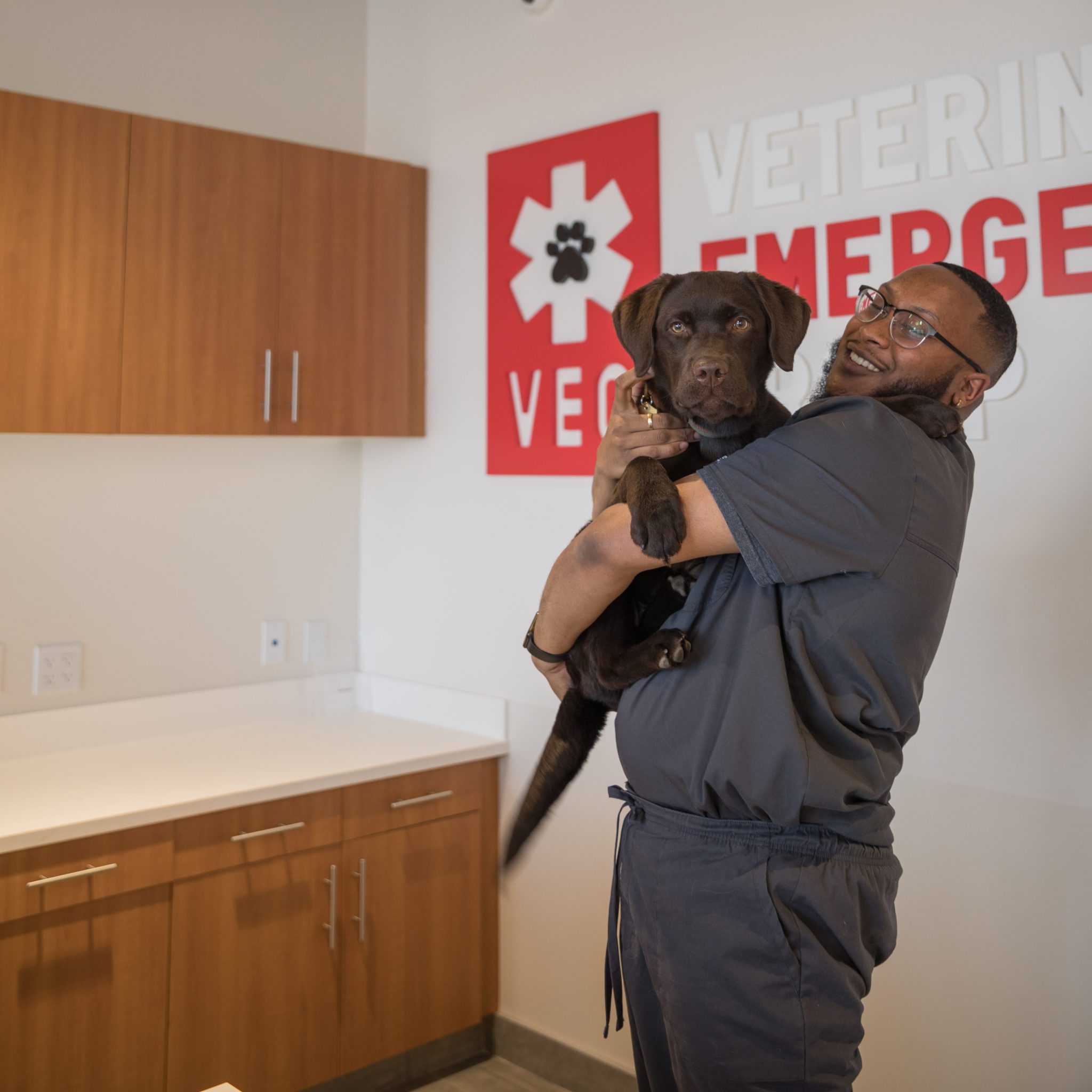
Top Dog Emergencies Across the US
Dr. Lindsay Kendrick
Call & Speak with a doctor Open 24/7, Even Holidays!
Walk in today for:
Emergencies
Point-of-Care Ultrasound
Urgent Care
X-Rays
Diagnostics + Testing
End-of-Life Care
Surgery
Treatment + Hospitalization
As a dog owner, you know how important it is to stay on top of your pet’s health and wellness. But did you know there are many common dog emergencies that affect pets in the United States?
By learning how to recognize these emergencies, you can quickly respond to them if they happen to your pet. The faster you react to a pet emergency in the right way, the better chance your pet has of coming through the experience with no trouble. Read on to learn more about the top dog emergencies in the United States.
Ingestion of a Toxic Substance
Dogs may swallow or consume toxic substances in and around the home. Dogs who spend time outside, even in the backyard, may be at risk of eating toxic plants and other items they find outdoors. When this happens, dogs can suffer from the effects of toxicity or poisoning.
If you suspect your dog has eaten something toxic, bring them to an emergency vet without hesitation. The faster you respond, the better chance your dog has to recover fully. Toxicities can cause long-term health complications too, so follow up with your pet’s regular vet as well.
Traumatic Injury
A traumatic injury is a type of injury that happens suddenly, rather than something that is caused by a long-term health problem. These injuries come in many forms, including motor vehicle accidents and fights with other animals. Dogs who live indoors or outside are at risk of being injured by a wide variety of sources. If your dog is injured you should take them to the emergency vet, even if they aren’t showing signs of pain. There could be internal bleeding or other types of complications you cannot see.
Insect or Snake Bite/Sting
Indoor and outdoor dogs may come into contact with venomous insects and spiders. When this happens, it is possible for them to be bitten or stung. In some cases, these injuries may cause severe allergic reactions or toxicity, and this will require a trip to the emergency vet.
Bites from venomous snakes may cause the same results. Most indoor dogs aren’t at risk of exposure to snakes, but if your dog spends time unattended outdoors—even in your backyard—there is always a chance of a snake bite.
Frostbite
Frostbite occurs in dogs who are left outside for too long in below-freezing temperatures, but it can also happen to indoor dogs on their daily walks as well. If there is a lot of snow, ice, or freezing rain in your area and your dog goes for a walk, be sure to wipe off their paw pads, nose, and ears to prevent the risk of frostbite.
These exposed parts of your dog’s body are the most likely places where they may experience frostbite. If you notice brittle, cold skin or a change in your dog’s skin color in these locations, take them to the emergency vet for treatment.
Heatstroke
Heatstroke is common in most of the United States. It typically occurs when dogs are left unattended in vehicles with the windows rolled up, even on mild days; however, it can also occur if a dog overexerts themselves on a hot day or spends too much time outdoors without relief from the heat.
Dogs who suffer from mild to moderate heatstroke will drool and pant excessively and may have an increased heart rate. More severe cases will involve a loss of consciousness or seizures, and this could potentially become fatal if left untreated. Dogs with heatstroke must receive fluids and medical care to recover.
Difficulty Breathing
Difficulty breathing may be caused by a wide range of underlying problems. Your pet could be suffering from an allergic reaction, or could have swallowed something that is obstructing their airway. No matter the cause, trouble breathing should always be treated as an emergency. If your pet is not breathing at all, this is a critical emergency. If your pet can breathe but is having trouble doing so, they should still receive urgent medical attention.
Come to VEG for all Dog Emergencies
As you can see, there are several canine emergencies you need to keep in mind if you’re a dog owner in the United States. By brushing up on this information, you’re doing yourself and your pet a favor. You can be sure you know how to recognize the top dog emergencies and understand when you need to go to the emergency vet with your pet, too.
If you have a dog emergency, contact VEG by calling one of our locations. With locations all over the country, we have emergency veterinarians available 24/7 to help guide you in the best direction and make sure your dog receives the care they need.

